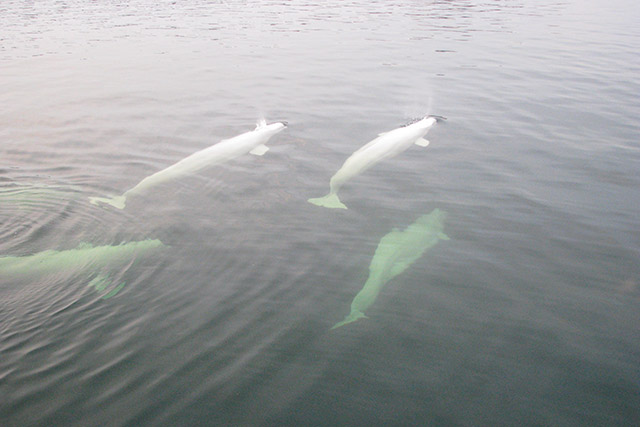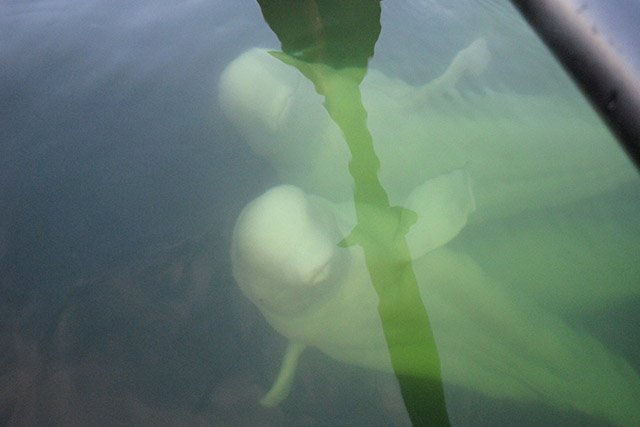Join the Pod: 5 facts about beluga whales in Manitoba
Wapusk National Park
From roughly July to September, Northern Manitoba’s coastal waters bristle with approximately 55,000 beluga whales. This large group, known as the Western Hudson Bay population, is not only the biggest concentration of belugas in Canada, but also makes up one-third of all the belugas in the entire world.

During peak season, groups of 3,000 to 5,000 gather in and near the Churchill, Nelson, and Seal River estuaries, which serve as a place for pods to eat, molt and rear their young. Belugas are thought to return to the same locations each year, while some research even suggests migration routes appear to be passed down through females to offspring.
If their smarts, their toothy smiles or their extremely sociable nature doesn’t make you fall in love with belugas, here are a few more unique characteristics of these incredible sea creatures:
- Belugas are chatterboxes. Known to be one of the most vocal whale species they use three types of sounds—whistles, calls and echolocation—to communicate with each other, hunt and warn other pods about predators. Extra fun fact: A beluga’s melon—the fat hump on their head—focuses and projects echolocation signals through the water. They can even wiggle and change the shape of their melon to direct sound.
- Baby belugas are actually born grey, brown or blue. They turn white as they age. The average lifespan of a Western Hudson Bay beluga is estimated to be 50 years, but some researchers believe they can live up to 90.
- Beluga whales are one of three species of cetaceans (a fancy word for the aquatic group of whales, dolphins and porpoises) with a flexible neck. Their seven vertebra are not fused, giving them the ability to turn their head side to side, or up and down. Want to know the other two? It’s the Narwhal and Irrawaddy Dolphin.
- The Western Hudson Bay beluga whale population plays an important role in the North’s ecosystem. Their movement in the water helps to circulate essential nutrients throughout the ocean. This movement is called the whale pump! This supports healthy marine ecosystems and the growth of phytoplankton, which locks up a massive amount of atmospheric carbon and produces half the planet’s oxygen.
- There is a rich cultural, nutritional and social connection between beluga whales and Northern Indigenous communities. Belugas are annually harvested by Inuit of Nunavut and Nunavik as part of their traditional diet. Their blubber is a good source of protein and is especially rich in Vitamin C.

Parks Canada’s mandate is to help preserve our national parks, which includes protecting the wildlife who live or migrate through these areas. Learn more about research and conservation efforts in sea and on land happening in Wapusk National Park.
How can YOU help the Western Hudson Bay beluga population? Check out the Beluga Bits project where you can aid Assiniboine Park Zoo in classifying images of the whales. This data can help researchers create a better picture of beluga behaviour, habitat use and the overall health of the ecosystem.
Related links
- Environmental DNA helping Parks Canada establish...
- Love, Loss, and Raptors
- Pick of the Season: Blueberry Jam
- Pick of the Season: Cranberries
- Churchill is the Greatest: 3 more reasons Time Magazine was...
- Cape Churchill Caribou Scat Collection
- Pick of the Season: Fireweed jelly
- Pick of the Season: Labrador Tea
- Pick of the Season: Snow goose
- She can dig it: Cultural Resource Management Advisor Sandra...
- Date modified :